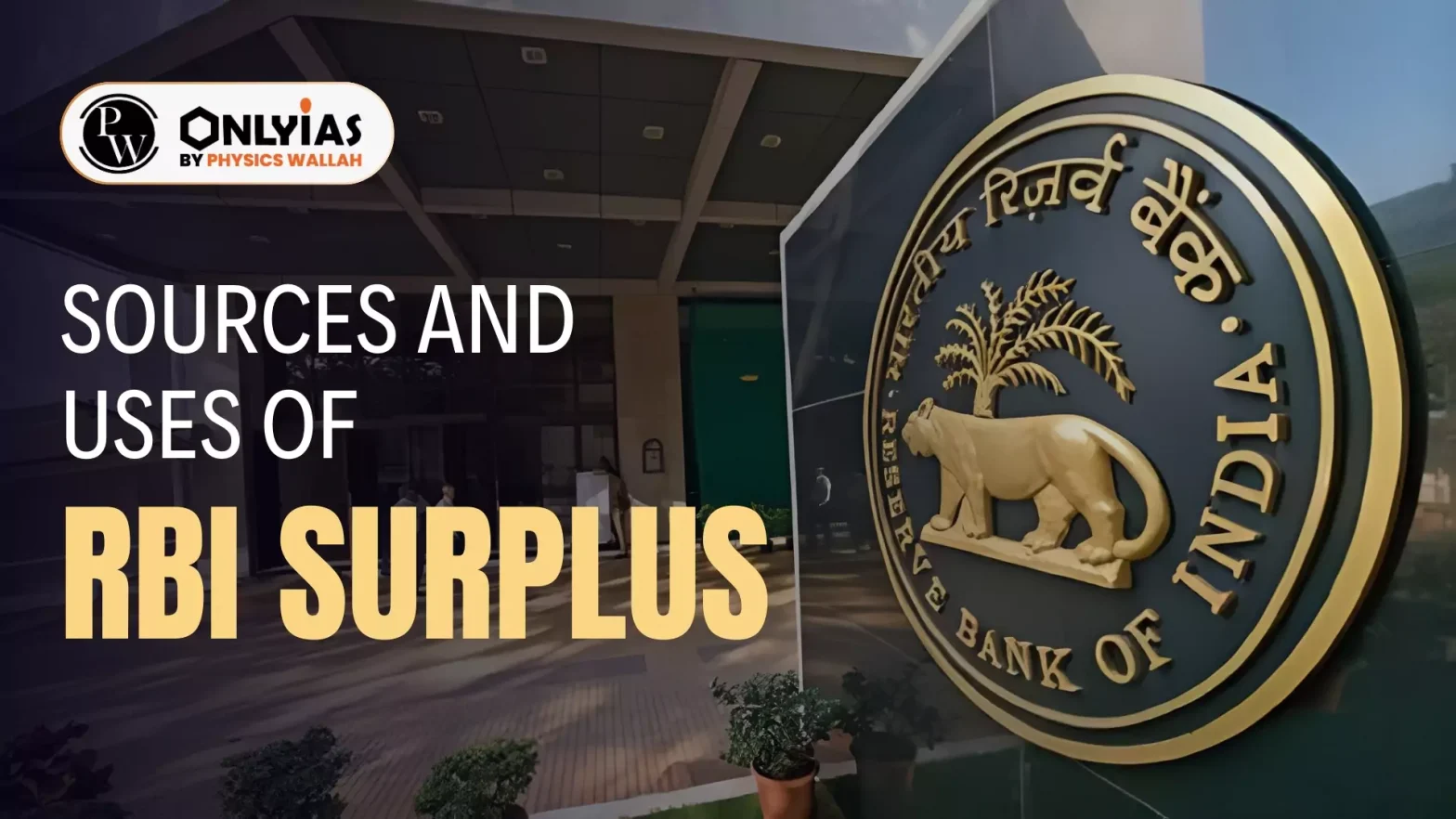Context
Recently, the Reserve Bank of India (RBI) announced a record dividend of Rs 2.11 lakh crore for the financial year 2023- 24. This surpasses the previous record of Rs 1.76 lakh crore set in 2018-19, marking a significant development in India’s economic landscape.
RBI Surplus Transfer
- The higher-than-expected dividend to be given by the Reserve Bank of India (RBI) to the government did shake the market positively as could be seen in the softening of bond yields.
- The finer details of the emergence of this dividend will be available once the accounts are worked out and the central bank brings out the annual report.
- Till then, there will be considerable speculation on the components that have contributed to the sum of Rs 2.1 trillion.
Enroll now for UPSC Online Course
Understanding Dividends
- Definition: A dividend is a share of profits given by a business to its owner.
- Example: If a shop makes a profit of Rs 1 lakh and the owner keeps Rs 30,000, that’s the dividend.
RBI and the Government
- RBI: The Reserve Bank of India is the central bank of India.
- Government: The government of India is the owner of the RBI.
- Dividend Decision: Every year, the RBI and the government decide how much of RBI’s earnings will be kept by RBI and how much will be given to the government as a dividend.
How RBI Earns Money
- Foreign Currency Investments: RBI invests India’s forex reserves in dollars, euros, pounds, etc. It earns interest on these investments.
- Currency Trading: RBI buys and sells dollars to keep the value of the rupee stable. The profit from these transactions is RBI’s income.
- Interest on Domestic Assets: RBI holds government bonds and lends to banks at the repo rate. It earns interest from these activities. In 2023- 24, the repo rate was mostly at 6.5%, so earnings were good.
Why RBI Gives Surplus to Government
- RBI’s Focus: RBI’s job is not to make profits but to focus on:
- Keeping the rupee’s value stable.
- Controlling inflation.
- Maintaining economic stability and growth.
- RBI Act: According to the RBI Act, RBI must give its surplus to the government every year.
- Reserves: But first, RBI keeps money for its expenses and emergency funds.
Positive Aspects
- Fiscal Space: RBI’s money will increase the government’s income by 0.3% of GDP. This gives the government more financial resources to spend on crucial sectors like health, education, and infrastructure.
- Cheaper Loans: If the government sticks to its fiscal deficit target, its gross borrowing could decrease by over Rs 1 lakh crore. This will lead to lower interest rates in the market. Banks will have more money to lend to private companies.
- Positive Sentiment: RBI giving such a large sum boosts confidence among people and investors. It’s a sign of India’s strong economy. When this news came out, the stock market saw record gains.
Enroll now for UPSC Online Classes
Negative Aspects
- RBI’s Independence: Some economists fear that pressure to give more money every year could gradually reduce RBI’s independence. RBI might hesitate to make decisions that reduce its earnings.
- Inflation Risk: RBI’s money injects extra cash into the market. If used for populist schemes or freebies, it could increase inflation. This risk is higher when inflation is already above RBI’s target.
- Impact on Financial Stability: During economic crises, RBI needs reserves to help banks. This was evident during the COVID period. RBI’s money came from 2023-24 profits, not old reserves, but it could still reduce RBI’s ability to help.
Jalan Committee and ECF
- Dispute: In 2018, there was a dispute between RBI and the government over sharing RBI’s reserves.
- Jalan Committee: The Bimal Jalan Committee was formed and suggested a new Economic Capital Framework (ECF) in 2019
- ECF: ECF determined how much reserve RBI should keep and how much it can give to the government.
- RBI’s Total Reserve: According to ECF, RBI’s total reserve should be 20-24.5% of its balance sheet.
- Components: This includes the Revaluation Reserve and Contingent Risk Buffer (CRB).
- Surplus Distribution: If RBI’s earnings increase significantly in a year, it can give more money to the government without touching its core reserve.
Way Forward
- RBI’s Record Dividend: RBI’s record dividend is a big gift for the government.
- Caution: But care must be taken that this doesn’t become a habit. The government cannot depend on RBI’s money every year.
- Maintain RBI’s Autonomy: RBI’s independence is fundamental for correct monetary policy. A reduction in this can have a long-lasting impact. The government should not pressure RBI to give an equal or higher dividend than this year.
- Use Wisely: Think long-term; this is not everyday money. The government should use it to strengthen the economy, not for populist programs. Options include:
- Increasing infra spending to support long-term growth.
- Spending on increasing employment.
- Improving health and education.
- Moving quickly towards clean energy.
- Cleaning up fiscal math by reducing off-balance sheet borrowing.
- Don’t Be Complacent: RBI’s fantastic earnings in 2023-24 happened due to several reasons:
- The country’s growth remained strong.
- Global interest rates increased.
- The rupee was more stable compared to 2022-23.
- But this situation can change. The global economy is slowing down, and interest rates may soon peak. The government should not assume that RBI will always give so much money.
Conclusion
RBI’s record dividend to the government boosts fiscal space, but caution is needed to maintain RBI’s autonomy and wisely utilize funds for long-term economic stability.
Enroll now for UPSC Online Course
![]() 27 May 2024
27 May 2024

